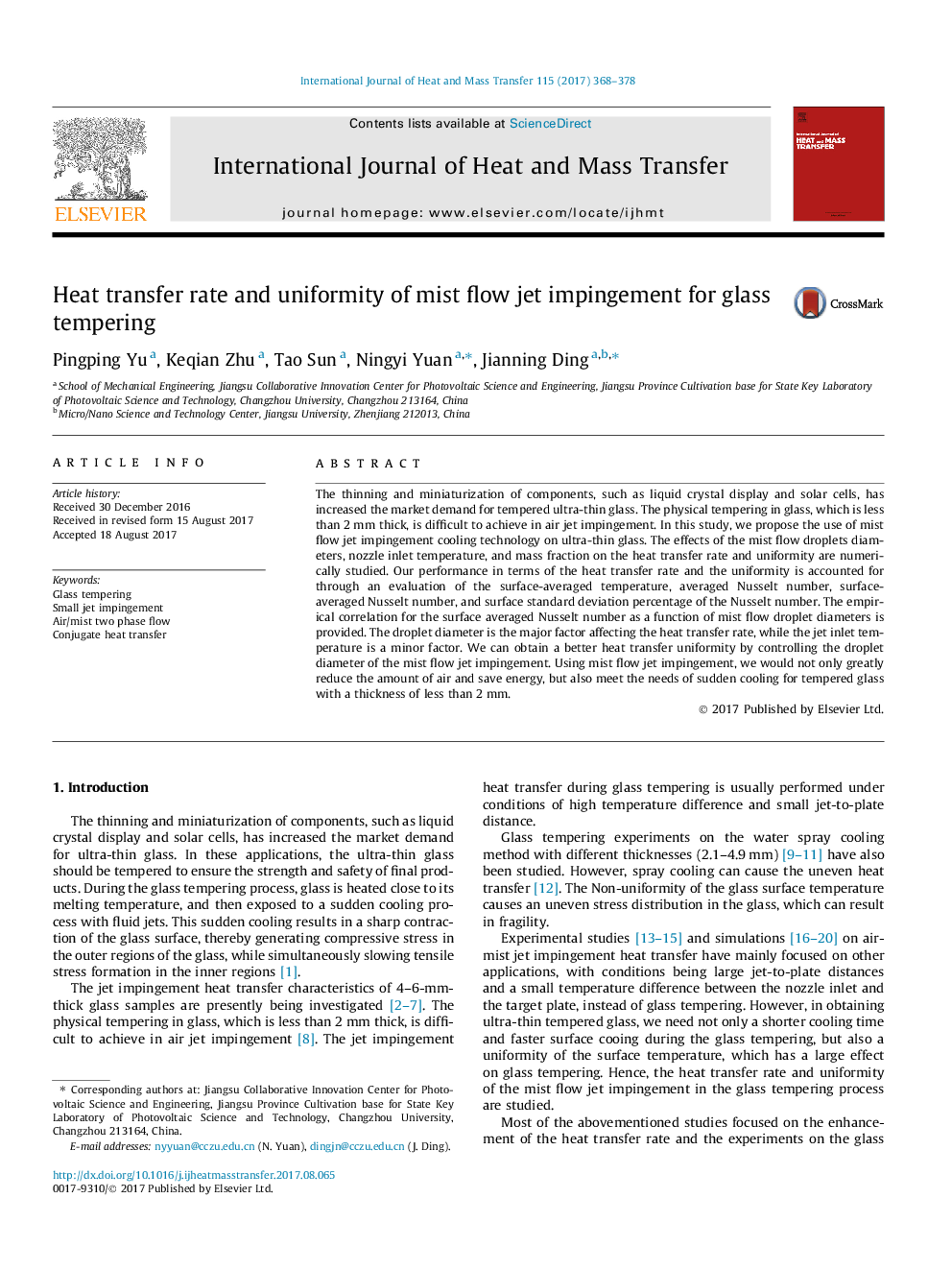| Article ID | Journal | Published Year | Pages | File Type |
|---|---|---|---|---|
| 4993978 | International Journal of Heat and Mass Transfer | 2017 | 11 Pages |
Abstract
The thinning and miniaturization of components, such as liquid crystal display and solar cells, has increased the market demand for tempered ultra-thin glass. The physical tempering in glass, which is less than 2 mm thick, is difficult to achieve in air jet impingement. In this study, we propose the use of mist flow jet impingement cooling technology on ultra-thin glass. The effects of the mist flow droplets diameters, nozzle inlet temperature, and mass fraction on the heat transfer rate and uniformity are numerically studied. Our performance in terms of the heat transfer rate and the uniformity is accounted for through an evaluation of the surface-averaged temperature, averaged Nusselt number, surface-averaged Nusselt number, and surface standard deviation percentage of the Nusselt number. The empirical correlation for the surface averaged Nusselt number as a function of mist flow droplet diameters is provided. The droplet diameter is the major factor affecting the heat transfer rate, while the jet inlet temperature is a minor factor. We can obtain a better heat transfer uniformity by controlling the droplet diameter of the mist flow jet impingement. Using mist flow jet impingement, we would not only greatly reduce the amount of air and save energy, but also meet the needs of sudden cooling for tempered glass with a thickness of less than 2 mm.
Related Topics
Physical Sciences and Engineering
Chemical Engineering
Fluid Flow and Transfer Processes
Authors
Pingping Yu, Keqian Zhu, Tao Sun, Ningyi Yuan, Jianning Ding,
